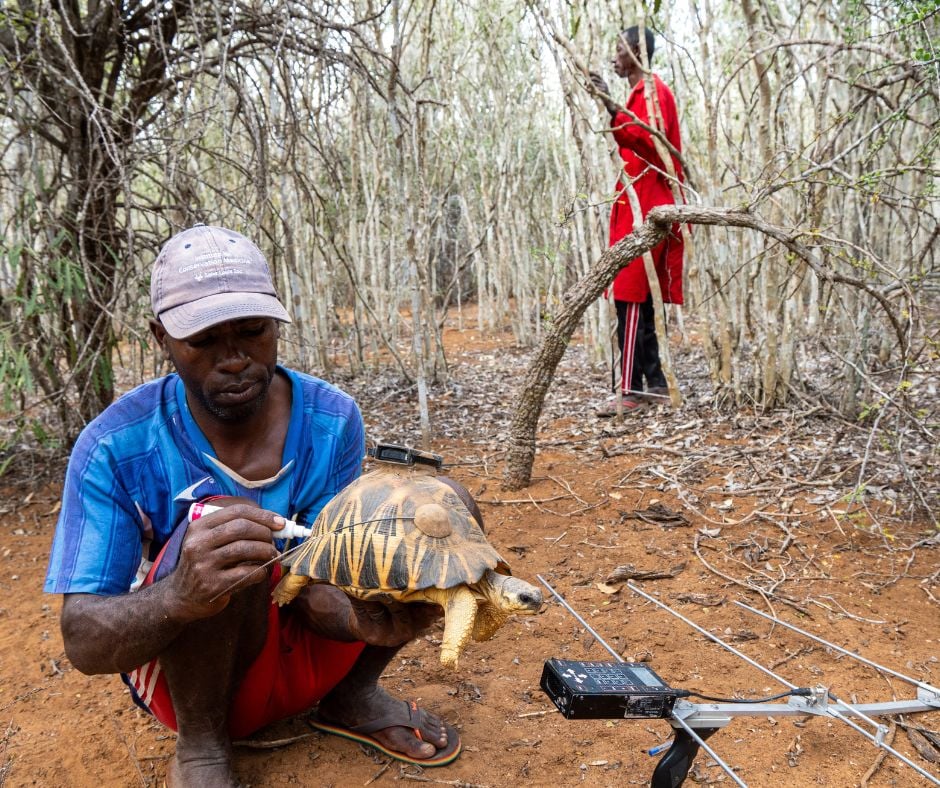Notes from the Field in Madagascar
By Brett Bartek
In January of this year, 1,000 Radiated Tortoises were moved from Turtle Survival Alliance’s two conservation centers in southern Madagascar to a pre-release pen located deep in a community-protected forest in the Androy region. This forest is the second site that was chosen by the Turtle Survival Alliance Madagascar team as an appropriate place to release tortoises that were rescued from poachers. Turtle Survival Alliance staff has been working with this community for over a year to build a solid relationship in order to ensure that the tortoises, and their forest, will remain protected for the long term.
This July, I traveled back to the forest to assist Turtle Survival Alliance staff in releasing these 1,000 tortoises from the pre-release pen. This being only our second time releasing these rescued tortoises, we wanted to continue our monitoring efforts to ensure our methods were successful. Ideally, the released tortoises would settle into a natural home range and movement pattern within the first couple months of release and not leave the protected forest.

Our first two days of work included performing health evaluations on 300 random tortoises in the pen to determine how they fared over the last seven months. We changed things up since the last time and increased the size of the pre-release pen to eight hectares (almost 20 acres) over the six hectares (almost 15 acres) at the previous release site. The change was noticeable after seven months, with tortoises being harder to find in the larger pen and feeling much heavier at the end of the penning period. Just like at our last site, we attached GPS loggers and radio transmitters to 15 of the translocated tortoises and five resident tortoises for monitoring and comparison.

The spiny forest is much denser at this site. I could barely take a step without being grabbed, poked, or stabbed by the wide variety of vegetation that has evolved some serious self defense mechanisms. During these first two days of work I was reminded about how important these forests are to the communities surrounding them. I lost track of our community guides while we were working on a small group of tortoises. After a few minutes, I looked up and saw them walking back to us from the dense forest with something in their hands. They had collected a couple of large wood boring beetles that were going to be on the lunch menu a little later in the day. They were similar in size and shape to the ones I had seen in the cottonwood trees while working in Oklahoma, but were much more brightly patterned and colored with large spines covering various parts of the insects body. I was offered a taste, but politely declined, as the beans and rice were a little more familiar to me.
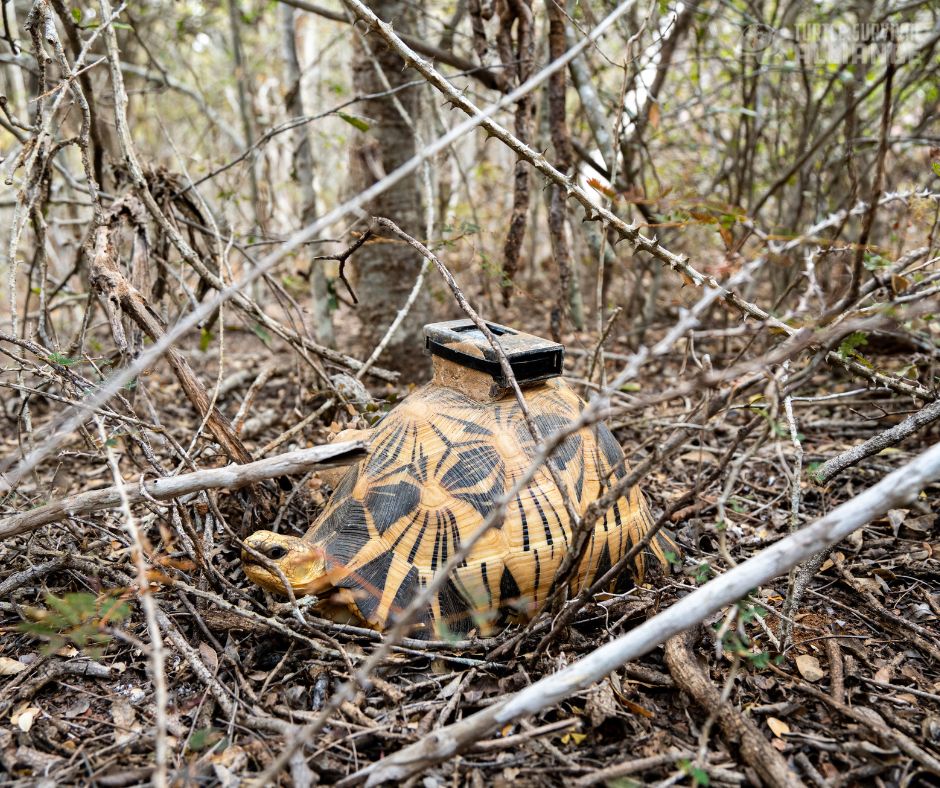
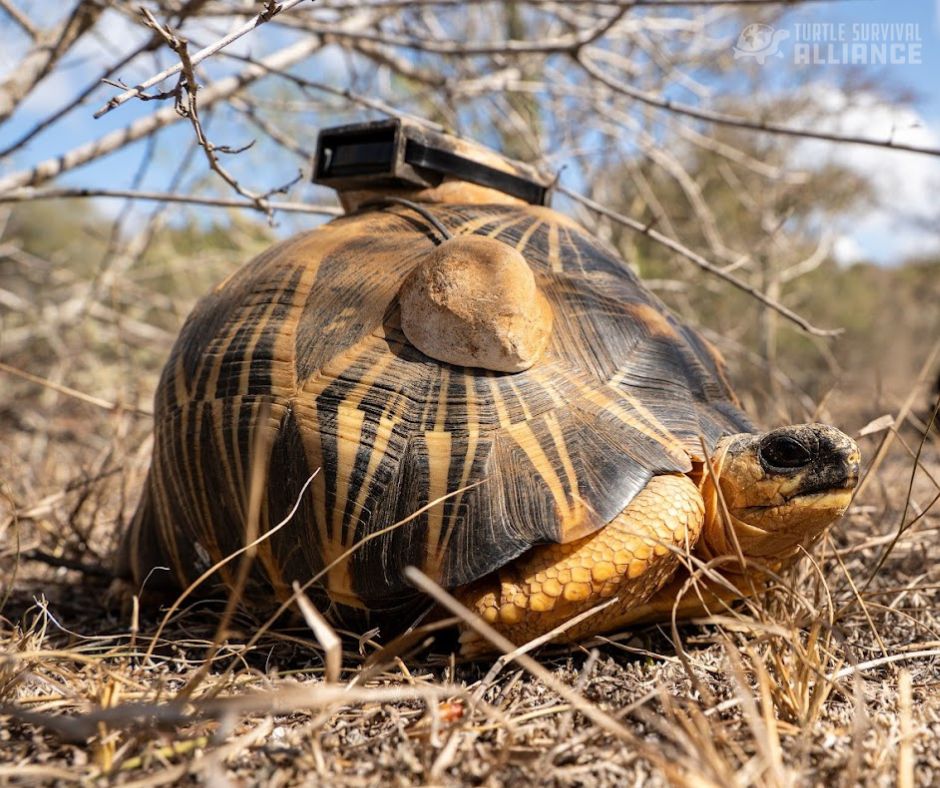
July is a winter month in the Southern Hemisphere. Temperatures during this time of the year dip into the low 50s (Fahrenheit) at night and might hover in the high 80s (Fahrenheit) during the day, very similar to the southern Florida winters I’m used to. This is also the dry season in this part of the world. Vegetation that the tortoises might forage upon is few and far between, and as such, this is also the inactive season for the tortoises, with some only moving a few meters per day. The weather and the inactive tortoises makes work in the pen move pretty smoothly, if you don’t count the hostile vegetation. After finally opening the pen, we tracked the tortoises using radio telemetry for two days and confirmed that they were not moving very much, with only one of the 15 tortoises leaving the pen.
After completing our mission at our second site, we headed back to the Tortoise Conservation Centre (TCC) to gear up for the next and final part of our mission. In the evening I was able to take a walk around the TCC and observe the tortoises that are being housed there. Crested Drongos, Coucals, and Souimanga Sunbirds were moving throughout the native spiny forest. A troop of Ring-tailed Lemurs made their way through the tortoise pens, stealing some of the sweet potato leaves that the tortoises were not interested in eating on this cold afternoon. This walk is always a sobering one as the scope of the problem we are combating becomes immediately evident by the 10,000 tortoises waiting to be released back into the wild where they were born.
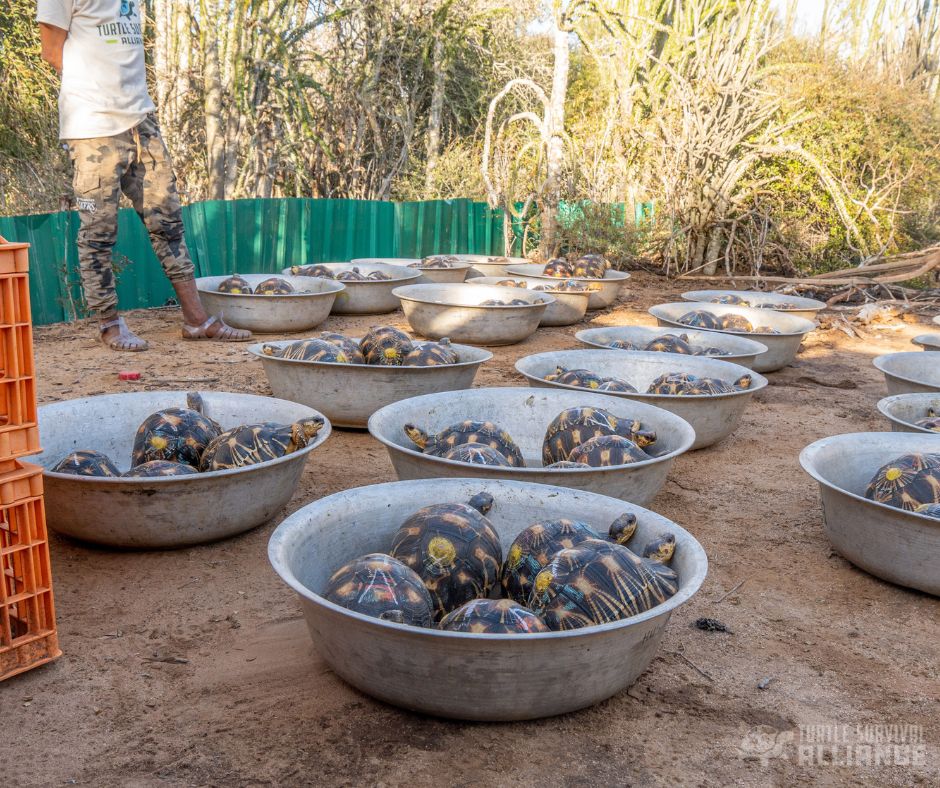
The next morning, a little over 300 Radiated Tortoises were loaded up into trucks, and the team drove them to our first release site, where two new four-hectare (almost 10-acre) pens were constructed in the forest waiting for them. When we arrived at the site we met with the community leaders to discuss the plan and what everyone’s role would be. We all drove down to the pen, and one by one, we started pulling groups of tortoises out of the trucks and placing them in large bowls of water to allow them to drink for a few minutes before finally releasing them into the pen. This routine happened two more times over the next two days, with us placing 500 tortoises in each pen—one thousand more tortoises ready for release.
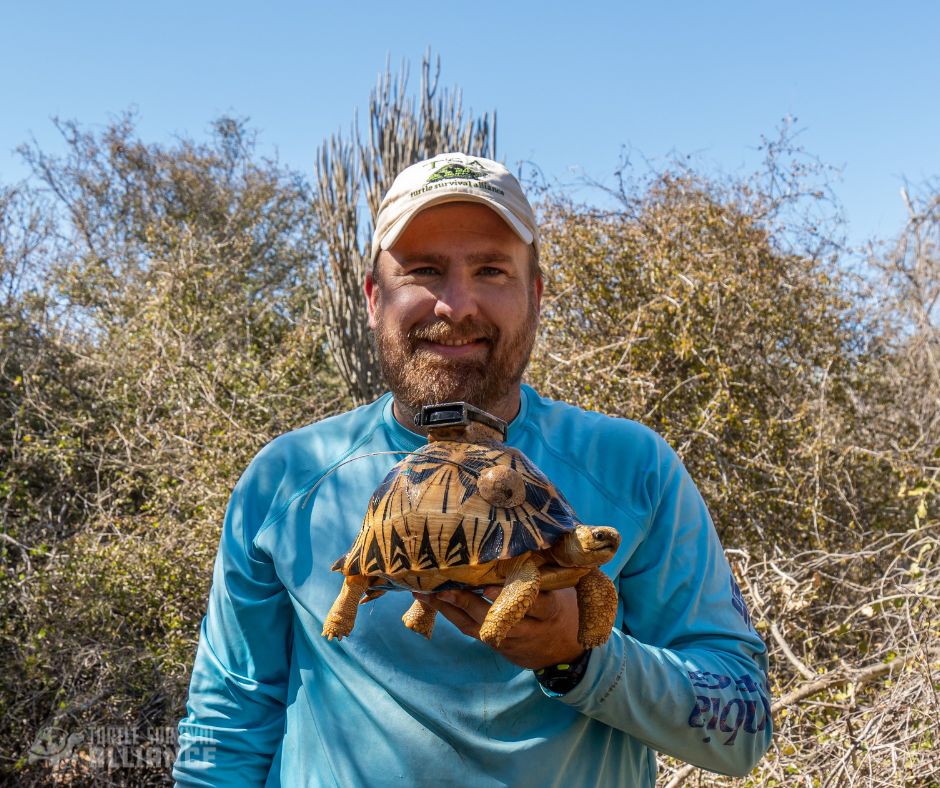
I finally started my week-long trip back home, where I had to get used to not speaking in broken French or Malagasy, could take a hot shower just any time I wanted, ate things other than rice, and went back to working in an air-conditioned office. I can’t wait to go back to Madagascar.
All photos courtesy of Brett Bartek.
Image 1: Turtle Survival Alliance team member adheres tracking device to Radiated Tortoise in Madagascar.
